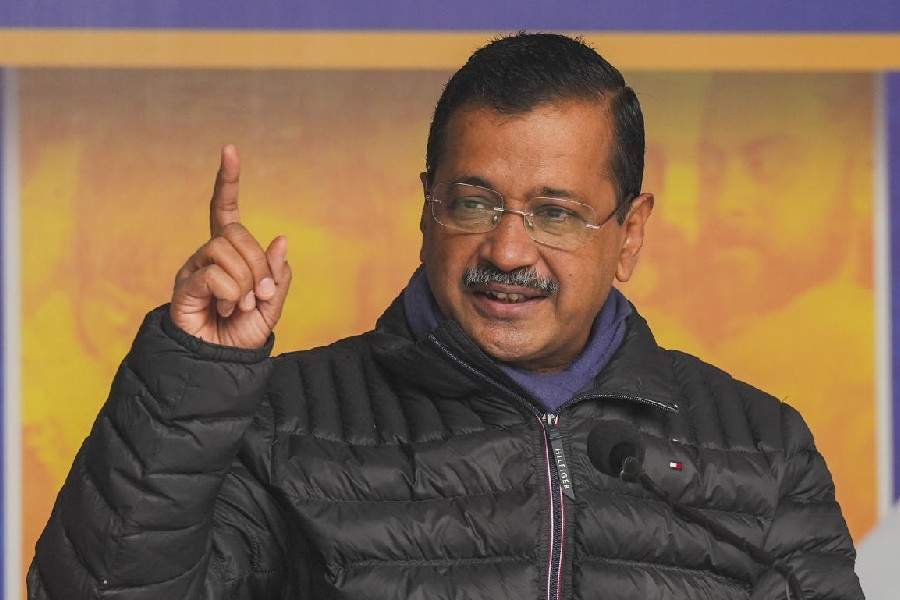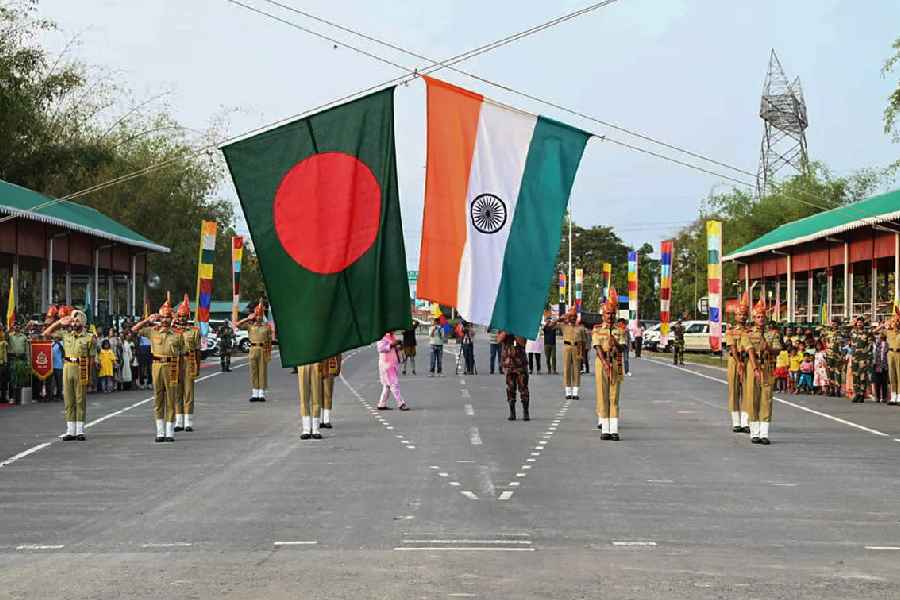Eden Gardens is one of the great arenas of world sport. During the IPL, it is a cauldron of sounds and a dazzle of colour with loud chanting, music and Mexican waves. An IPL game is like a football match, and Eden Gardens holds almost the same numbers as Manchester United’s Old Trafford stadium.
The IPL is one of the most spectacular sports tournaments in the world. This year, it is the first part of a great summer of cricket. The ICC Cricket World Cup, which is going to be the biggest cricket tournament to date, starts at the end of the month. And then for the English and the Australians, there is the small matter of an Ashes Test series in August and September.
Cricket is one of the main manifestations of the ‘living bridge’ — the links of people, ideas and institutions between Britain and India. IPL cricket has evolved a lot from the game that originated in rural England some 200 years ago. India play South Africa on June 5 at the Rose Bowl outside Southampton, a short drive from Hambledon, the ‘cradle of cricket’, where the game was first played in the 18th century. I hope some visitors from Calcutta can visit the spot.
When t2oS asked me if I could write about the players who impressed me during IPL 12, I thought I should pick a ‘United Nations’ team for the World Cup with at least one player from each IPL franchise. It took far longer than I anticipated. Being a selector is difficult. In the end, I decided to pick a squad of 15, the size of each country’s World Cup squad. Even that meant hard choices.
The Captain
I decided Virat Kohli has enough pressure being captain of India to take on my team. Instead, I choose New Zealander
Kane Williamson of Sunrisers Hyderabad (SRH) for a good World Cup reason. After England’s poor performance in the 2015 World Cup, the team leadership realised they needed to change. They soon saw an example to emulate when New Zealand toured England later that year. The cricket was attractive to watch as New Zealand, under Brendon McCullum, were always ready to attack.
Since Williamson became captain, the Kiwis have been more circumspect on when to attack, but they still play expressive cricket. England’s ODI team has become No. 1 team in the rankings because it plays with the same freedom. While Williamson hasn’t played much this IPL, he has exuded the same calm from the dugout as he does when he is on the pitch.
Opening batsmen
My first choice may surprise:
David Warner of SRH. He is not everyone’s favourite character and has been involved in various incidents, not just the one for which he was banned for a year. But he took responsibility for his actions, and accepted the sanctions imposed on him. He has returned to the cricket field playing as well as ever and is the IPL top scorer so far. He has a great eye and may yet ruin England’s summer.
His fellow opener has to be his SRH partner
Jonny Bairstow. Their century partnerships have been a highlight of IPL 12. They complement each other well with their left hand-right hand combination thrashing opposing bowling attacks. Whereas Warner’s batting style is punchy, Bairstow uses a full swing of the bat as he launches his hands at the ball from a high backlift. This sometimes means he hits the ball into the air too much, but his full swing is a flourish of delight. And it seems he’s had a great time in India, judging from his interviews and social media.
The top order batsmen
I would take Royal Challengers Bangalore (RCB) captain Virat Kohli just for his century innings against Kolkata Knight Riders (KKR) at Eden Gardens in match 35. It was not chanceless, and he didn’t start well. But he played orthodox shots to get his eye in, and then smoothly accelerated to his century. His batting is testimony that T20 cricket isn’t just brute force. It is rare for a batsman to construct an innings in T20 cricket, unlike in Test matches and ODIs. IPL has too few duels between bat and ball. Last summer’s confrontation over five tests between Jimmy Anderson and VK in England was a wonderful, absorbing contest.
His predecessor as Indian captain, M.S. Dhoni, is in for calmness and ability to finish an innings. Any squad or team benefits from having such experience in their ranks. I think his calm is down to concentration. With Chennai Super Kings (CSK), he has had a good IPL behind the stumps. Although he is not the youngest of wicketkeepers, the speed of some of his stumpings has been breathtaking.
A team benefits from youthful players unafraid to take risks, who can be game changers.
Rishabh Pant’s batting may sometimes be reckless, but it can also win matches. He looks like he enjoys every minute of every game he plays for Delhi Capitals (DC). He is always smiling — even after exchanging sledges about babysitting with Australian captain Tim Paine, he was game enough to be photographed holding one of Paine’s infants — and still with a big smile on his face.
The all-rounders
Where would KKR be without Andre Russell?! His innings have entertained even in losing causes like his valiant 65 against RCB at Eden Gardens. He uses the bat like a club to hit balls way over the boundary. I met him and Carlos Brathwaite by chance in a city hotel. Both coped politely and calmly with my barrage of questions. They assured me England were still an excellent ODI team, despite their recent indifferent tour of the Caribbean. A great pair of ambassadors for West Indian cricket.
If Dre Russ uses a bat like a club, in Hardik Pandya’s hands, it becomes a whip. I know his trademark shot is “the helicopter” copied from MSD, but I think the speed of shot comes more from a flick of the wrists than his arms. He is another great entertainer and his rapid scoring nearly won Mumbai Indians (MI) game 47 at Eden. I fear (as an England fan) that his best is yet to come, and that his bowling will improve as he gains more experience. Like Pant, he doesn’t appear overawed by any opposition.
The bowlers: Three spinners…
An early controversy of IPL 12 was Ravichandran Ashwin’s ‘mankading’ of Jos Buttler in game 4. I heard David Gower’s opinion at The Telegraph’s Pataudi Memorial lecture that it was wrong, although others declared it lawful. It showed Ashwin had a “bit of mongrel” as the Australians say, a readiness to scrap and take any advantage possible. He is also a supreme spin bowler. He has bowled with guile in IPL12 by varying deliveries to stop batsmen scoring freely. While his game may be more suited to longer versions of the game, his bowling is always worth watching.
I wanted to include Ravindra Jadeja, whose fielding and throwing are so good. I choose instead his Chennai Super Kings teammate
Imran Tahir. He is one of the few bowlers who appears to intimidate batsmen in IPL. Like Jadeja, he gets through his overs quickly. His leg spin troubles the very best. He deserves to be included for his celebration. After taking a wicket, he sets off for a wide run of delight, often chased by his teammates. He is a veteran of the game, yet still shows such a delight in taking a wicket. The sport is richer for his joy.
The other spin bowler I love watching is Rashid Khan of SRH, another leg spinner who worries batsmen. He will carry the hopes of war-torn Afghanistan in the World Cup, but he doesn’t appear to let that (or anything else) burden him. His bowling style is different from Tahir’s. He leans forward and his arm follows behind as he bowls. Sideways on, it looks like he releases the ball from behind him — perhaps that is why batsmen have trouble picking his variations.
...And four seamers
I would love to include Bhuvneshwar Kumar because he has one of the smoothest bowling actions of current players. He runs in quickly but keeps his head still, like a leopard. But the best fast bowler has been Bhuvi’s antithesis, MI’s
Jasprit Bumrah. Whereas Bhuvi glides into the crease, Bumrah has a stuttering run that ends in a wrench of the body as he lets the ball go with a rip. His action requires him to take care of his body because of the strain he must put on his back. As a personality, he appears the most understated of cricketers. When he takes a wicket, his celebration is muted.
If he has one of the best economy rates, the young South African pacer Kagiso Rabada who plays for DC has taken the most wickets. Rabada bowls fast from a relatively short run up. He has learnt to vary his pace to take wickets on surfaces slower than those he is used to in South Africa. He also seems to be enjoying the stress of IPL cricket. Rabada’s smile is more restrained than his teammate Pant’s, one of quiet satisfaction at averaging two wickets a game.
The final two are English. While Jofra Archer’s figures haven’t been as good as Bumrah’s, the Rajasthan Royals player has been a formidable ‘death’ bowler, bowling mostly in the final overs when batsmen seek to take most runs. He seems to have great temperament and doesn’t appear to worry if he bowls a bad ball or the batsmen hit runs. He turns around after he bowls each ball and marches back to the start of the run-up with the same deadpan face as when he bowls.
Harry Gurney of KKR is in because he exemplifies the typical English country cricketer. He also has the advantage of being a left-arm bowler. While not particularly quick, he has become a good limited-overs cricketer using guile and variation to take wickets and reduce batsmen’s strike rate. I had the opportunity to spend some time (too brief) with him. He’s enjoyed the big match atmosphere and pressure at Eden Gardens which he copes with by not getting too elated when he takes a wicket, nor too downcast when he’s hit for six.
P.S. If you’re going to the World Cup, getting your UK visa is easier than you think, but make sure you apply early. You can apply up to three months before travel.











